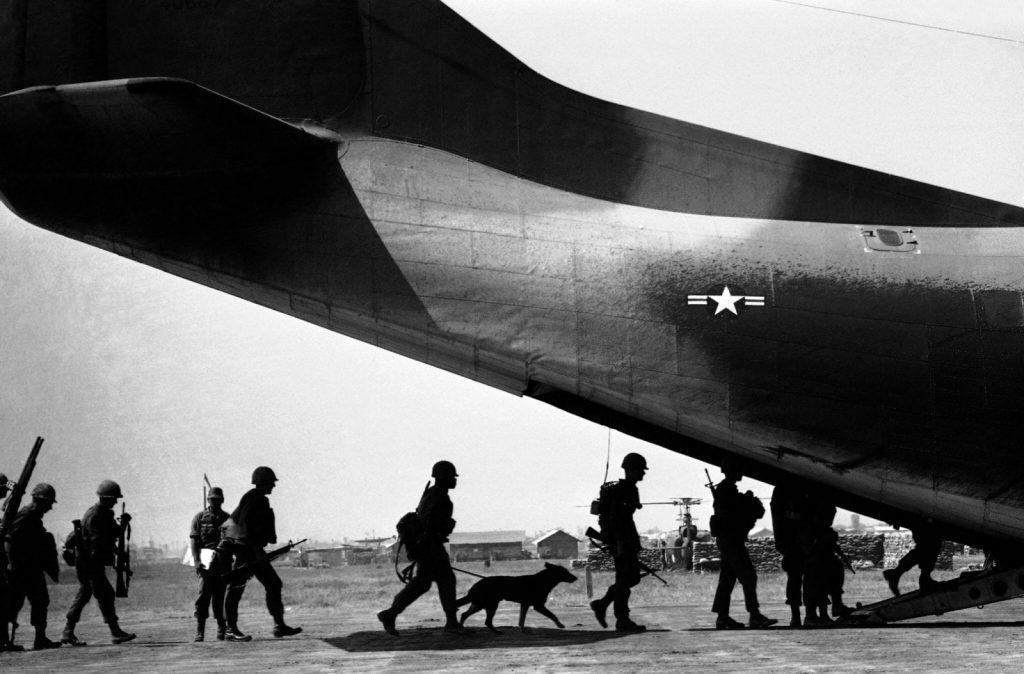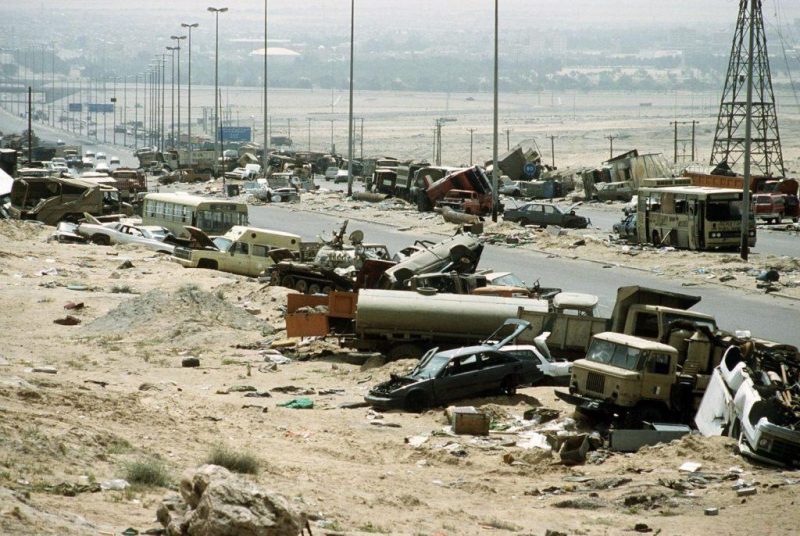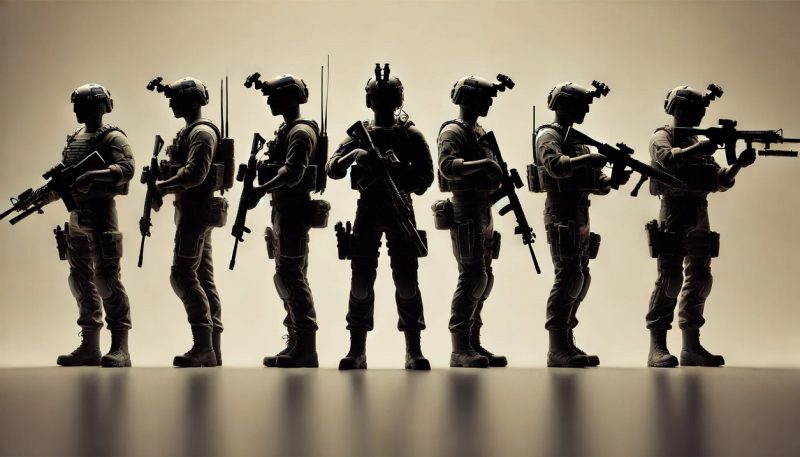Full-scale operations of U.S. Army Special Forces in Vietnam ended in 1972 after a 14-year long period. During that time, Special Forces troops operated in Vietnam, launching operations from the neighboring countries first and later had their own HQ in Vietnam.
Nam Dong, Lang Vei, Dak To, A Shau, Plei Mei – these were just some of the places U.S. Army Special Forces troops fought and died for during their 14-year stay in South Vietnam.
First Special Forces in Vietnam
It was a stay that began in June 1956 when the original 16 members of the 14th Special Forces Operational Detachment entered Vietnam to train a cadre of indigenous Vietnamese Special Forces teams. In that same year, on October 21, the first American soldier died in Vietnam – Captain Harry G. Cramer Jr. of the 14th SFOD.
Throughout the remainder of the 1950s and early 1960s, the number of Special Forces military advisors in Vietnam increased steadily. Their responsibility was to train South Vietnamese soldiers in the art of counterinsurgency and to mold various native tribes into a credible, anti-communist threat. During the early years, elements from the different Special Forces groups were advising the South Vietnamese.

5th Special Forces Group (1964-1971)
But in September 1964, the first step was taken in the making Vietnam the exclusive operational province of the 5th Special Forces Group when it set up its provisional headquarters in Nha Trang. Six months later, in February, Nha Trang became the 5th’s permanent headquarters. From that point, Vietnam was mainly the 5th’s show until 1971, when it returned to Fort Bragg.
The Green Berets of the 5th Special Forces Group were also the majority of the troops that comprised the MAC-V SOG (Military Assistance Command Vietnam, Studies and Observation Group). This unit conducted special operations in Laos and Cambodia as well as Vietnam.
Awards and recommendations
By the time the 5th Special Forces Group left Southeast Asia, its soldiers had won 16 of the 17 Medals of Honor awarded to the Special Forces in Vietnam, plus one Distinguished Service Medal, 90 Distinguished Service Crosses, 814 Silver Stars, 13,234 Bronze Stars, 235 Legions of Merit, 46 Distinguished Flying Crosses, 232 Soldier’s Medals, 4,891 Air Medals, 6,908 Army Commendation Medals and 2,658 Purple Hearts. It was a brilliant record, one that was built solely on blood and sacrifice.

U.S. Army Special Forces in Region
Not to be overlooked, other Special Forces training teams were operating in the 1960s in Bolivia, Venezuela, Guatemala, Columbia, and the Dominican Republic. Counter-insurgency forces of the 8th Special Forces Group conducted clandestine operations against guerrilla forces, carrying out some 450 missions between 1965 and 1968. In 1968, Special Forces were involved in tracking down and capturing the notorious Cuban revolutionary, Che Guevara, in the wilds of south-central Bolivia.
Southeast Asia, however, was to remain the Special Forces’ primary focus. Special Forces troops eventually established 254 outposts throughout Vietnam through their unstinting labors, many of them defended by a single A-team and hundreds of friendly natives.

The reputation of Special Forces in Vietnam
The Special Forces earned their reputation in places like Song Zoai and Plei Mei, where the Viet Cong and North Vietnamese threw everything they had at them but found out that wasn’t enough. They won their Medals of Honor in places like Nam Dong, where Captain Roger H.C. Donlon claimed the war’s first Medal of Honor for his actions on July 5, 1964, when he led Nam Dong’s successful defense against a Viet Cong attack, despite sustaining a mortar wound to the stomach.
“Pain, the sensation of pain, can be masked by other emotions in a situation like that,” Donlon recalled. “I was fighting mad right from the start; I also felt fear from the start … fear anybody would feel. It got to the point where we were throwing the enemy’s grenades back at them. Just picking them up and throwing those grenades back before they could blow.”
Back home in America, a confused public searching for heroes in a strange and unfamiliar war quickly latch onto the Special Forces. John Wayne made a movie about them; Barry Sadler had a number-one hit song, “The Ballad of the Green Beret,” and the Green Beret took its place alongside the coonskin cap and cowboy hat as one of America’s Mythic pieces of apparel.

Non-combat missions
But fighting in remote areas of Vietnam – publicity to the contrary – wasn’t the only mission of the Special Forces. They were also responsible for training thousands of Vietnam’s ethnic tribesmen in the techniques of guerrilla warfare. They took the Montagnards, the Nungs, the Cao Dei, and others and molded them into the 60,000-strong Civil Irregular Defense Group (CIDG). CIDG troops became the Special Forces’ most valuable ally in battles fought in faraway corners of Vietnam, out of reach of conventional backup forces.
Other missions included civic-action projects, in which U.S. Army Special Forces troops built schools, hospitals, and government buildings, provided medical care to civilians, and dredged canals. This was the flip side of the vicious battles, the part of the war designed to win the heart and minds of distant and different people. But although the Special Forces drew the allegiance of civilians almost everywhere they went, the war as a whole was not as successful.
Conventional units in the Vietnam War
President Lyndon Johnson had committed the first big conventional units to the war in March 1965, when Marine battalions landed at Da Nang to provide perimeter security to the airbase. Then in June, the Army’s 173rd Airborne Brigade entered the country, followed in July by the 1st Air Cavalry Division. From then on, a continual stream of Army and Marine units flowed into Vietnam until they numbered over 500,000 by 1968. But although American conventional forces scored successes in every major battle they fought, there was still no clear end in sight to war many Americans back home regarded as a quagmire.
Withdrawal from Vietnam
So in 1969, after President Richard M. Nixon took office, the United States began its withdrawal from Vietnam, a process known as Vietnamization. Gradually the Special Forces turned over their camps to the South Vietnamese. On March 5, 1971, the 5th Group returned to Fort Bragg, although some Special Forces teams remained in Thailand from where they launched secret missions into Vietnam. But by the end of 1972, the U.S. Army Special Forces role in Vietnam was over.







I served with the ’10’ Group (SFGA) at Ft. Devans in ’74’-’75’ and was also Soldier of the Month in June ’74’. I served with the best outfit in the Military during that time and will always be proud to have worn the coveted ‘Green Beret’. Thanks for the memories.
1966-7 i was with the 7th sf at ft bragg. our team was sent to aberdeen proving grounds to help with night vision, and air dropped listening devices. i still think about those days . priveleged to serve. never thought i would make it to 77.
My father Jimmy L. Cooper served and I know very little about his time there and the things he did. I was told he was in the special forces just a few year ago, I had no idea! He was a great man in my eyes as a young girl and I wish I had gotten to know him better before he passed. I have great admiration for anyone who serves for our country.
My father , James Cubitt serves for quite a few years in Vietnam as a special forces green beret paratrooper. Never knew , even about his bronze star until I ran across it as I was cleaning through garage after my mom passed. Very quiet Man as his past life. I now hold a deeper respect for him in life and as a father husband etc. courageous and always our protective of his family.
De Oppresso Liber………………………………………………………………
My grandfather served 1964-1969: with the Montagnard peoples ; they never lied . thousands died ;He was very proud to serve with them and was very proud of our government ; then !! Quoting Him : “I never would have left , except for the friendly fire ” : So the irony here is that because of a dumb ass 2Llt on his first patrol ; He came back to the USA . sense then ?? ::: VA ?( lies ) military ? More lies ….treated like shit ; Flash backs ? ( no help) now called PTSD ( still no help ) ; His experiences and treatments after Vietnam : Is why no one in our extensive family will serve ..So :: Here is the truth as well as a serious question : Our soldiers are treated better in the combat zone even by the enemy , than here at home ?? W H Y ????Grandpa had a lot of medals and such . He asked us to bury them at Sea , ( to wash away the pains ) !! so we did . E pluribus unum ?? NO WAY !!!!
Not sense Vietnam : A country that lies to its soldiers Has NO Honor .
Ps : I am using our church E-Mail address .
my cousin spoke out and got bombarded on internet . some guys found out where he lives . put him in the hospital, for telling the truth !!
Goodbye and may God please bless truth and Honor
and condemn what we have become today
Shasha N…..
God Bless you All. Soldiers Soldiers. The best of the best. Truly American Heroes. My Father, SM Stephen Joseph was third from the left in the original article pic.